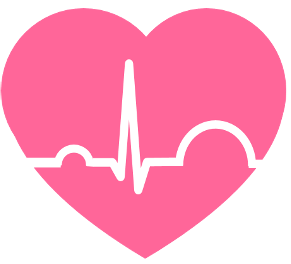
One of the main features of VS-SAFETY is conducting remote real-time ECG measurements. When the patient correctly wears the VSH101 single-lead ECG monitor developed by VitalSigns Technology and pairs it with VSG101 or VSG102, you can see the patient’s heart rate and body temperature, among other information, being accurately reported to VS-SAFETY on the “Patient Monitor” page.
However, ECG monitoring is a complex and time-consuming process. Therefore, if healthcare professionals believe that it is necessary to record all the data further, they can use the “ECG Monitor” feature for that purpose.
Similarly, there are two ways to access the “ECG Monitor” page. The first method is by clicking “ECG Monitor” from the “Main” page. The second method is by selecting “ECG Monitor” from the menu in the top right corner. Both methods will lead you to the “ECG Monitor” page.
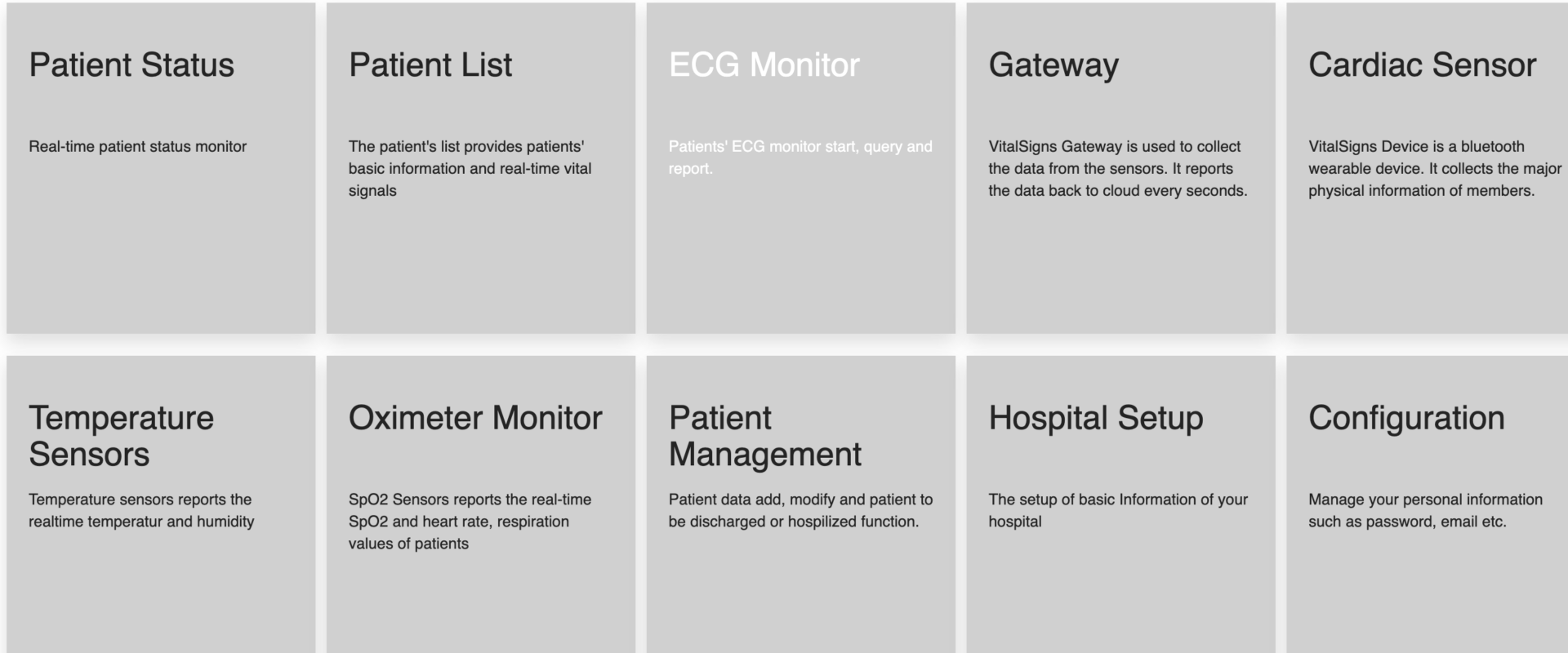
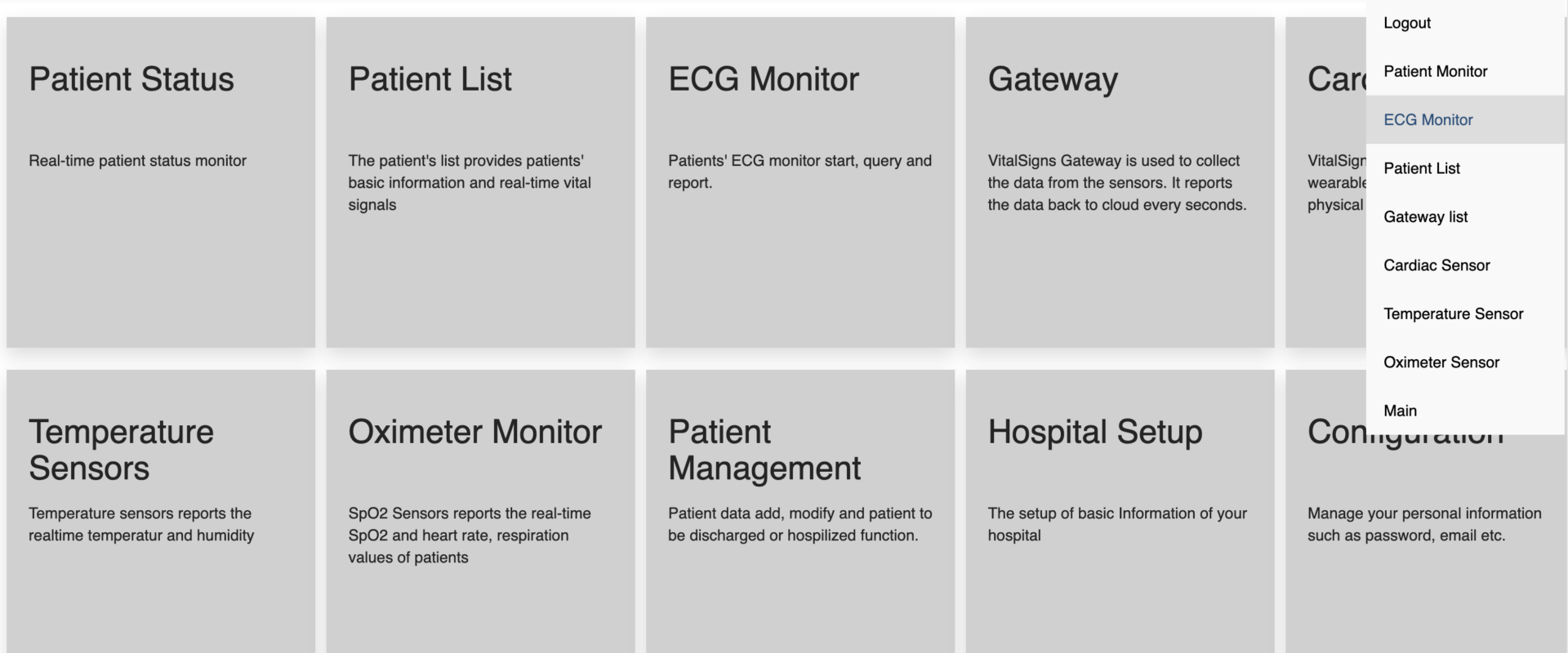
Once you enter the “ECG Monitor” page, you will see a query interface that requires the user to input the patient’s social security number. In the previous section, we learned that in the “sandbox” example, we have only one patient named “John.” In the “Patient List” page, we found out that John’s social security number is “A123456789.” Here, we can input John’s social security number. Next, please click the “QUERY” button.
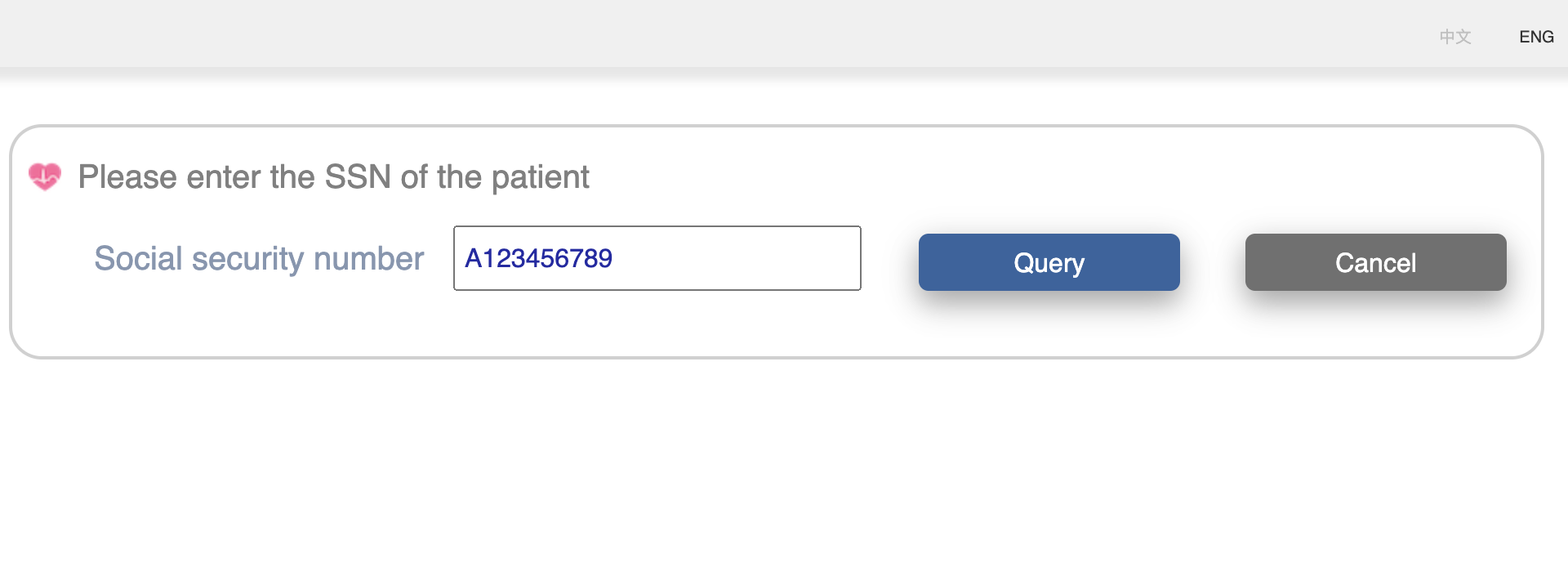
You will enter the initial page of ECG monitoring. On this page, in the first section, you can see the information of the patient “John”. Next is the ECG monitoring function section. To initiate an ECG monitoring session, please click the “ECG Monitor Start” button. If you click the “back” button, you will return to the previous page, allowing you to perform data inquiries for other patients.
Here, we choose to click on “ECG Monitor Start.”
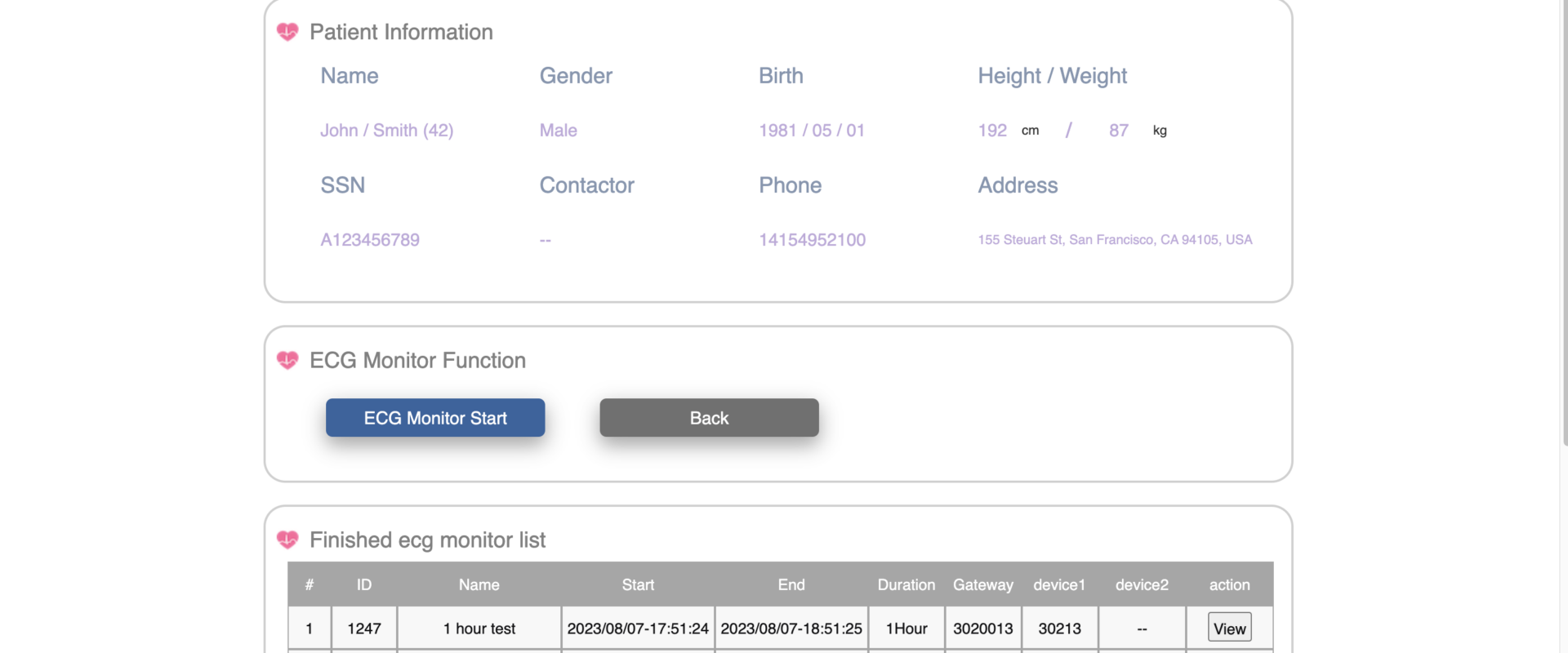
We start by entering the monitoring description for this session. Fill in the “description” field with your monitoring description. You can input names like “24-hour patient test” or “John Smith test” for example. Here, we input “1 HOUR TEST” as we want to conduct a quick one-hour test.
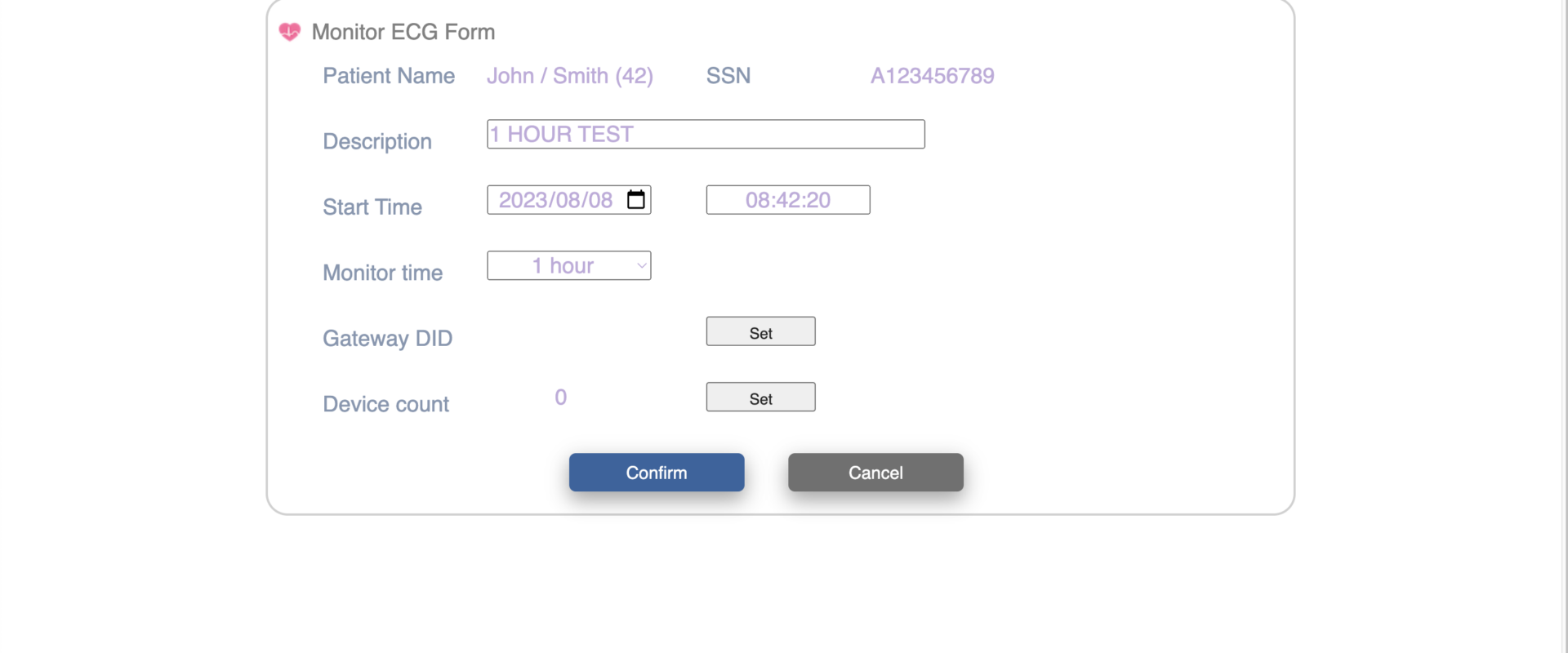
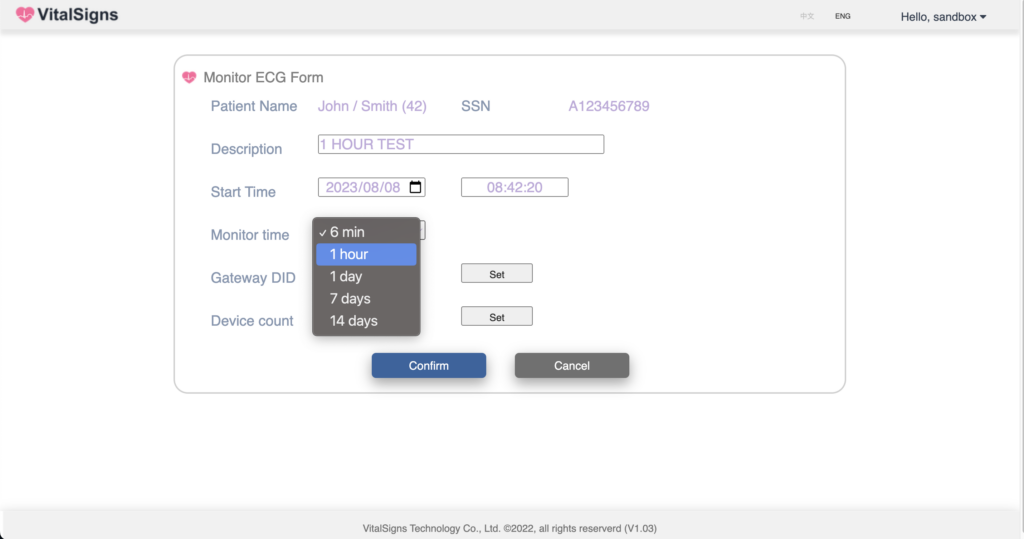
Next, we need to set the duration for the entire test. As mentioned earlier, this is a “1 HOUR TEST,” so here we will set it for 1 hour. However, capturing long-term cardiac symptoms requires an extended period, ideally 7 days or 14 days. This duration allows the patient to go through a complete week, including workdays and rest days, reflecting their regular routines and potential heart issues arising from various activities and stressors.
Shorter durations like 6 minutes or 1 hour won’t provide accurate HRV measurements. They can generally give a heart rate and basic ECG waveform. Such modes are more suitable for quickly classifying patients with evident conditions or for frontline healthcare workers who need rapid assessment. Some of our clients opt for a one-hour monitoring session after athletes have completed their exercise routines to assess their recovery capabilities. Let’s return to our example.
Next, we need to set up the gateway for communicating with the patient. Monitoring the ECG signal requires substantial data and network traffic. Therefore, we’ll use a specific gateway to directly communicate with the VSH101 device worn by the patient. Please press the “Set” button on the right side of “Gateway DID.” This will take us to the gateway selection page. On this page, we have only one online device called “VSG102-SANDBOX.” We can also see its time and battery status. Please press the “Set” button under “action” for “VSG102-SANDBOX.”
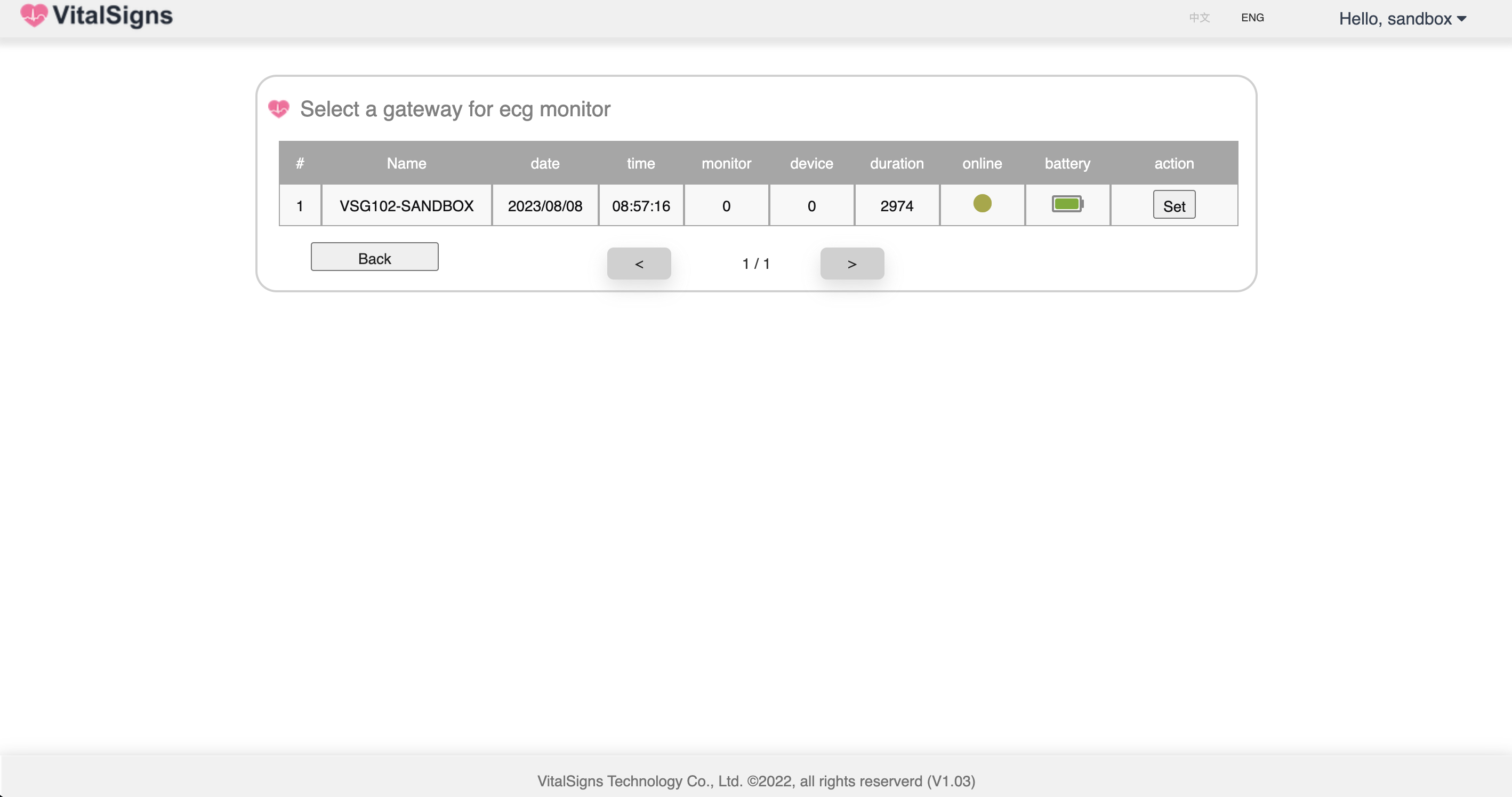
The next step is to set up the VSH101 device for the patient’s use. Please ensure that you have correctly set the device’s social security code to match the patient’s social security code so that the information can be correlated. Press the “Set” button on the right side of “Device Count.” Here, you can see that the backup social security code is correct. This mechanism is designed to reduce device misuse while synchronously confirming the patient’s identity in the process.
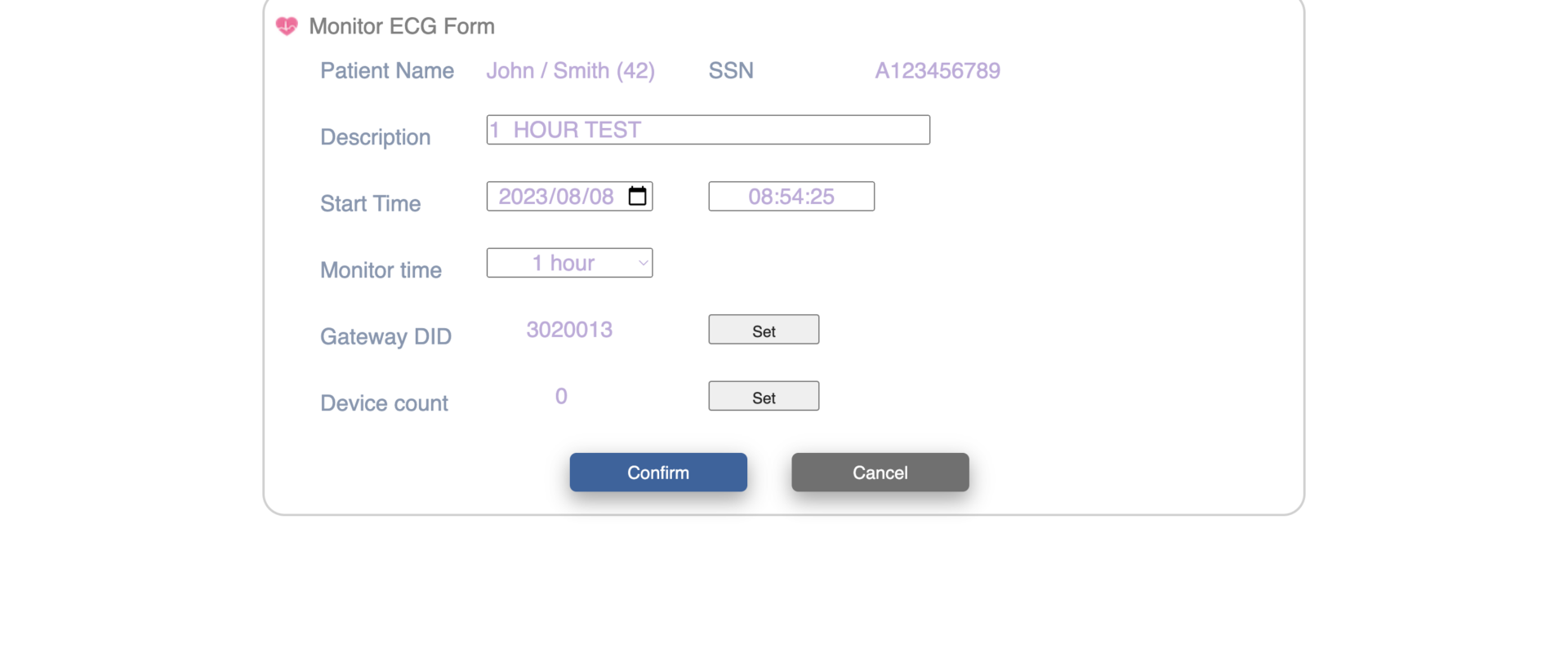
In this “sandbox” example, we have only one device. However, over multiple days, we would ask the patient to use two devices alternately. This way, one VSH101 device can be used daily while the other can be turned off for charging. Additionally, during the test, we would encourage the patient to avoid intense exercise. For shorter time intervals, the patient can either sit or lie down for a short rest to minimize signal interference caused by movement.
Next, please press the “Add” button.After the “Add” button changes to “Del,” please press the “Back” key to return to the previous page.
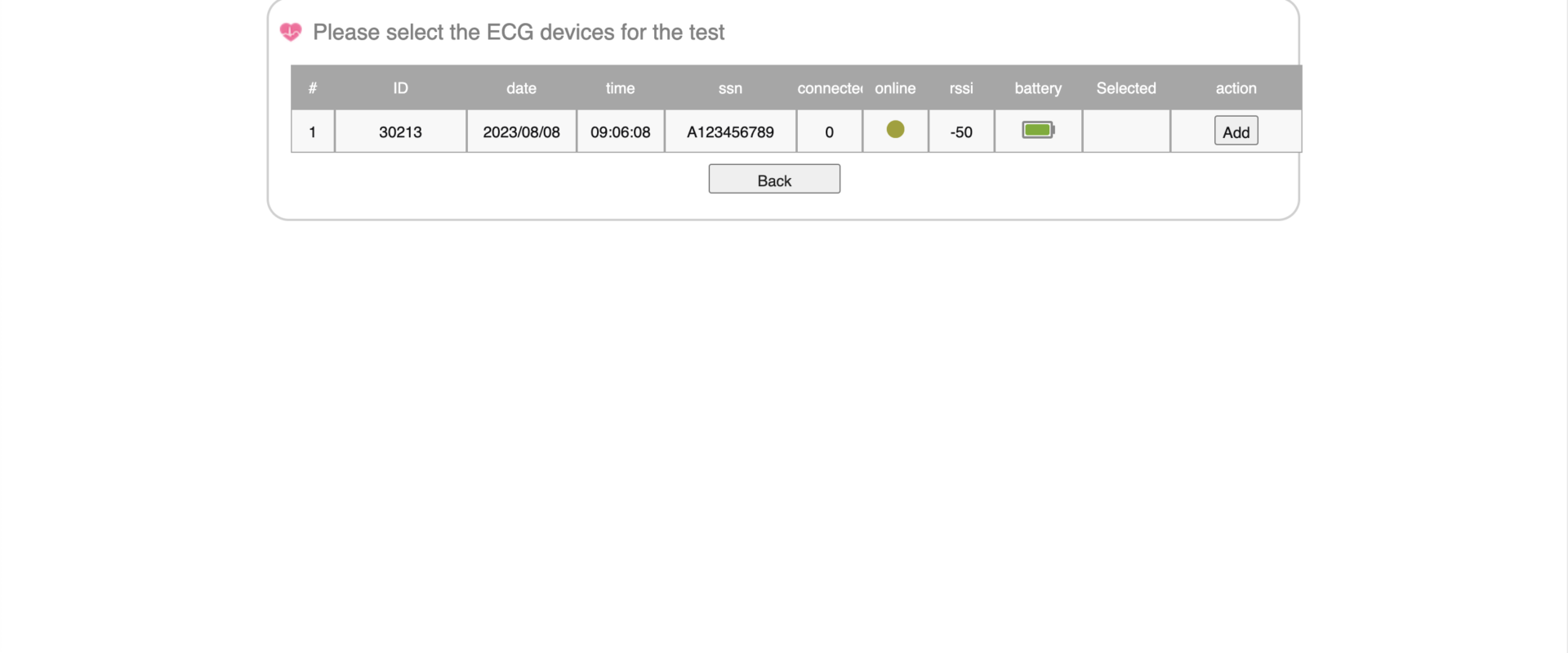
After returning to the previous page, confirm that the information is correct, and then you can press the “Confirm” button to start the one-hour ECG monitoring for “John.”
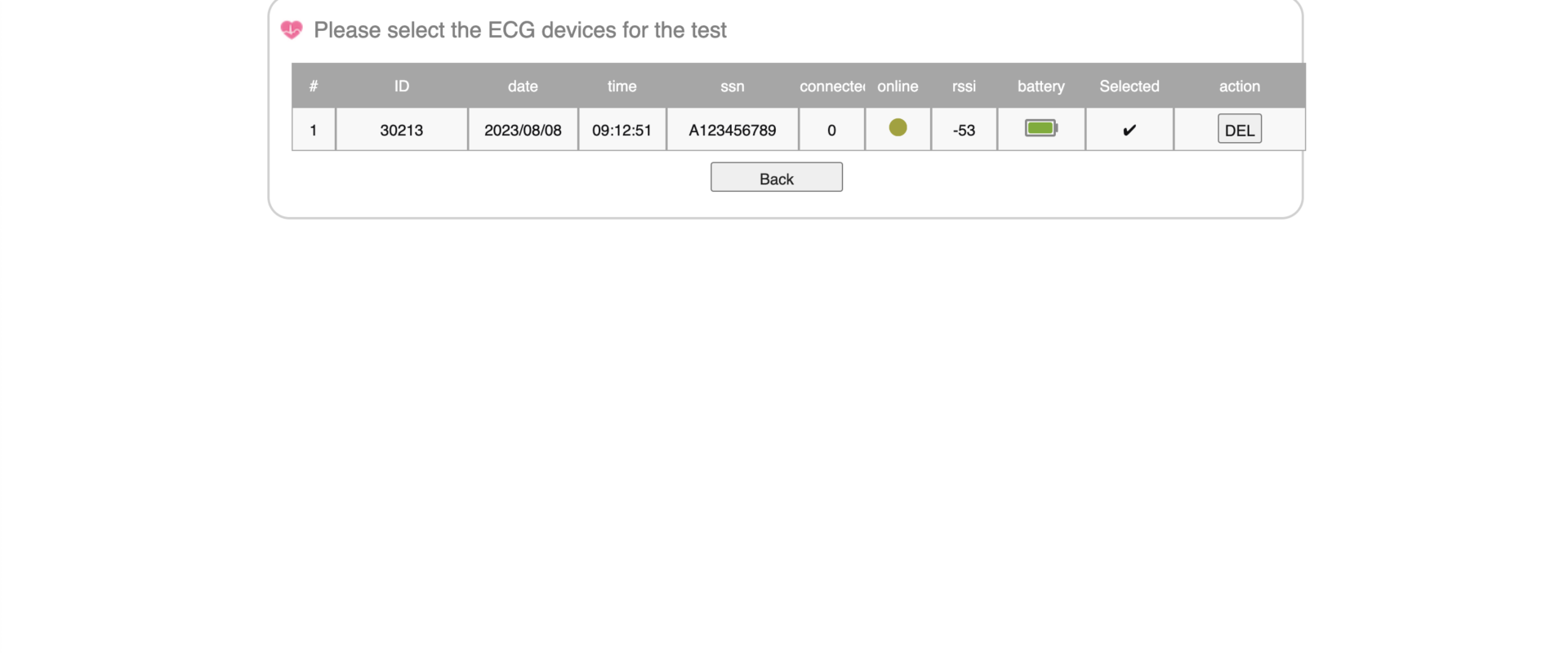
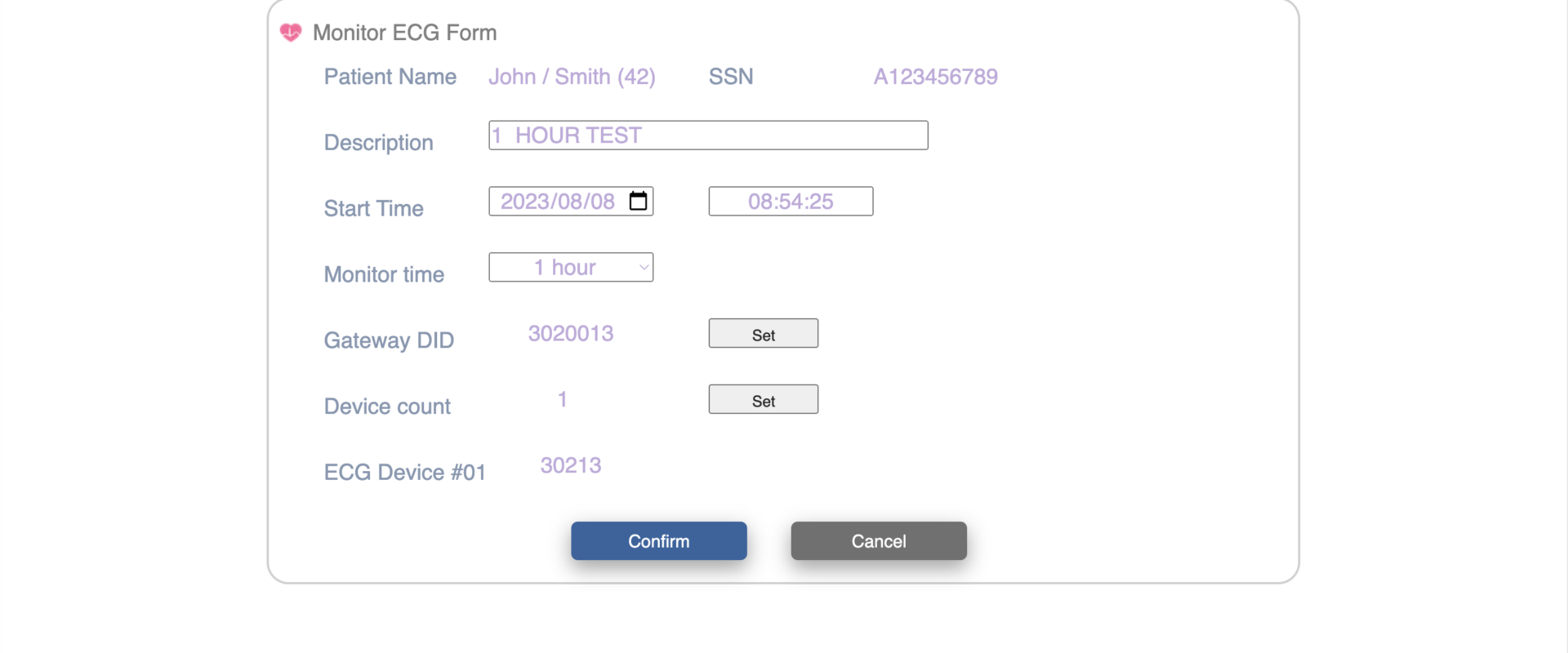
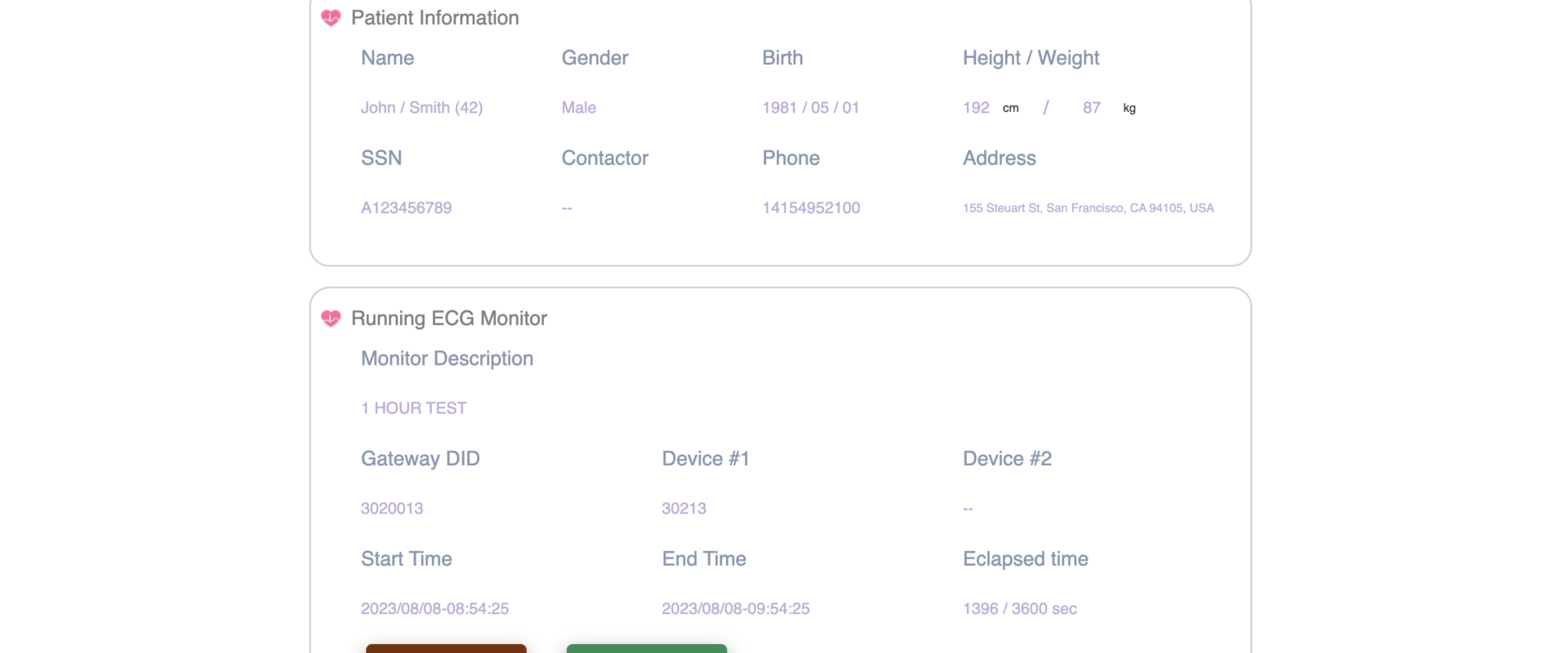
At this point, you can go to the Physiological Sensor Device page (which will be introduced shortly) to view the operational status of the device.
fter an hour of testing, you can return to the “ECG Monitor” page again. Enter “A123456789” as before. Once you’re in the patient’s information page, scroll down to find the “1 HOUR TEST” entry from earlier. Click on the “view” action in the corresponding column.
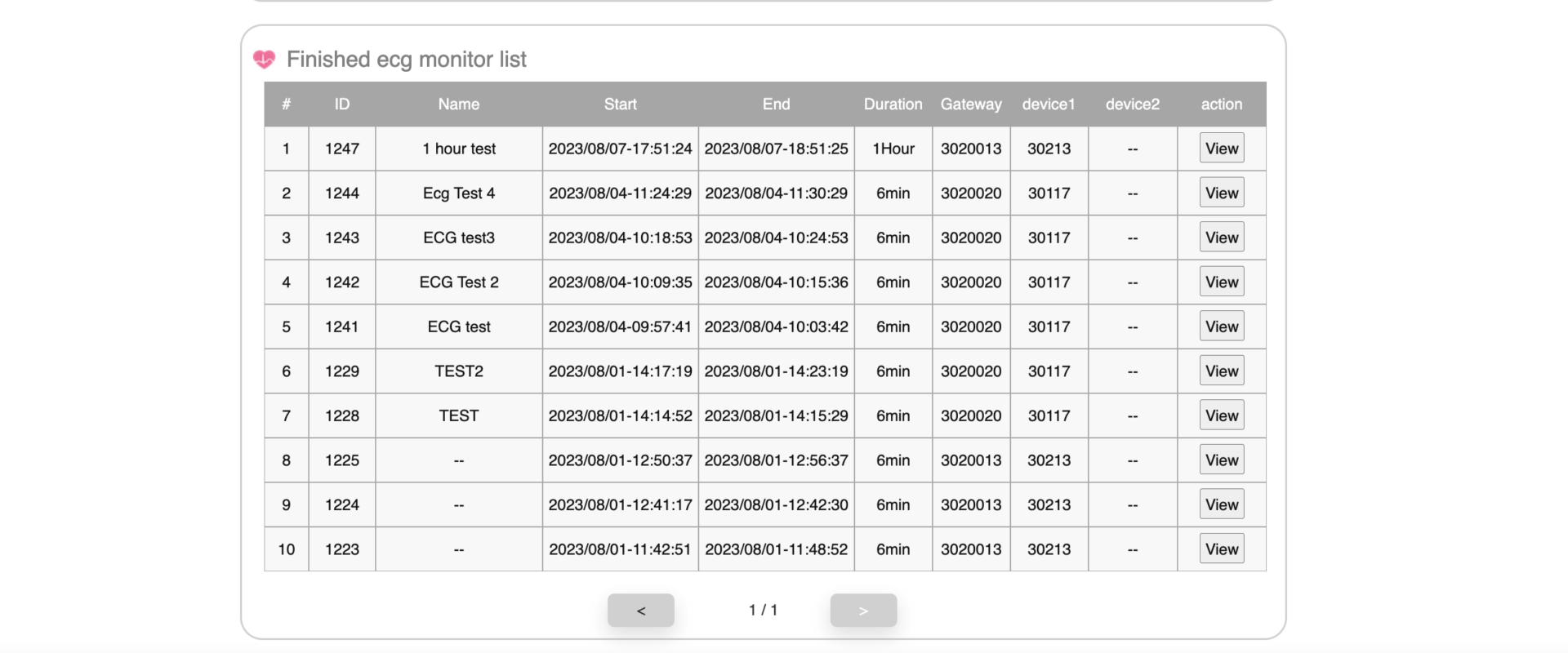
The generation of the report takes a little time, typically ranging from a few seconds to a few minutes, depending on the duration of the test. Once the report is generated, you will see 12 key detected symptoms on the screen.


You can click on “AF (Min.)” to view the details. If the patient has any relevant issues, you should see a screen like the one below. However, it’s also possible that there are no issues detected.
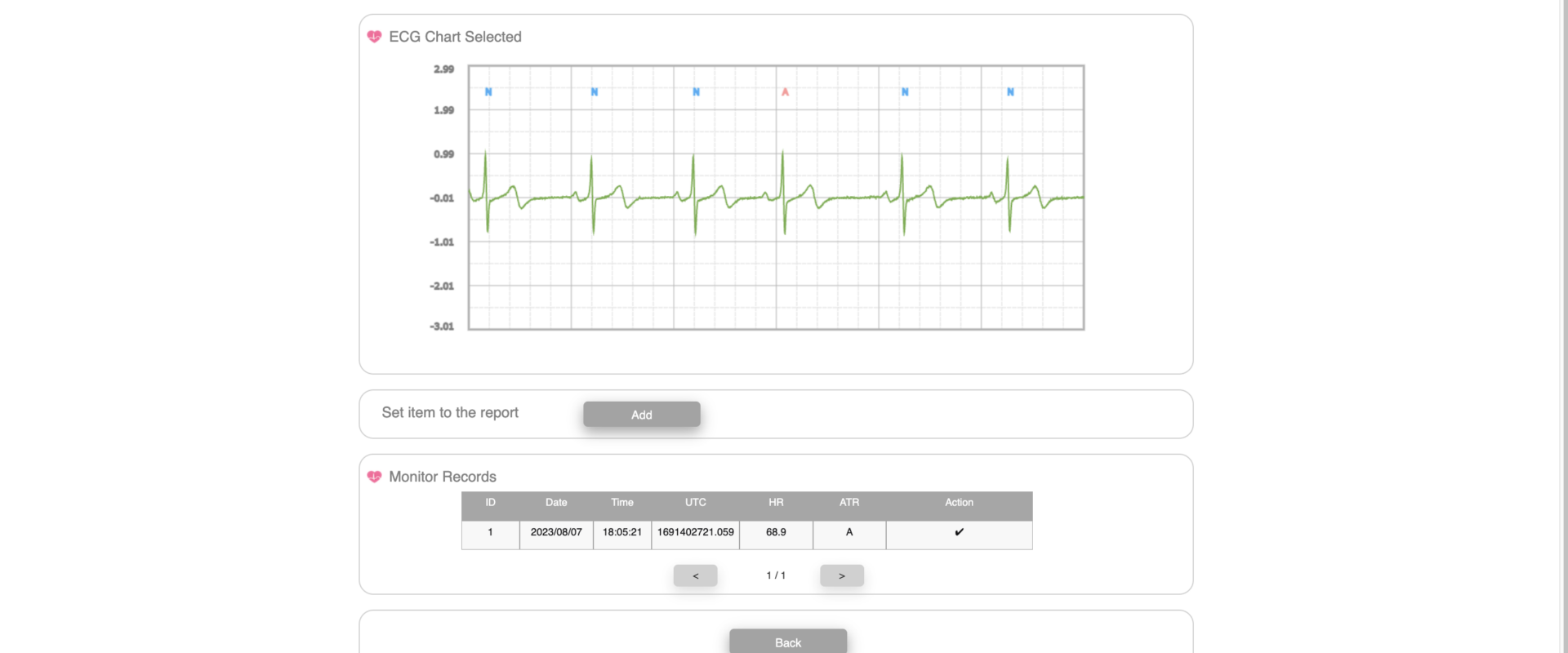
Here is an example of a rapid heart rate (tachycardia):
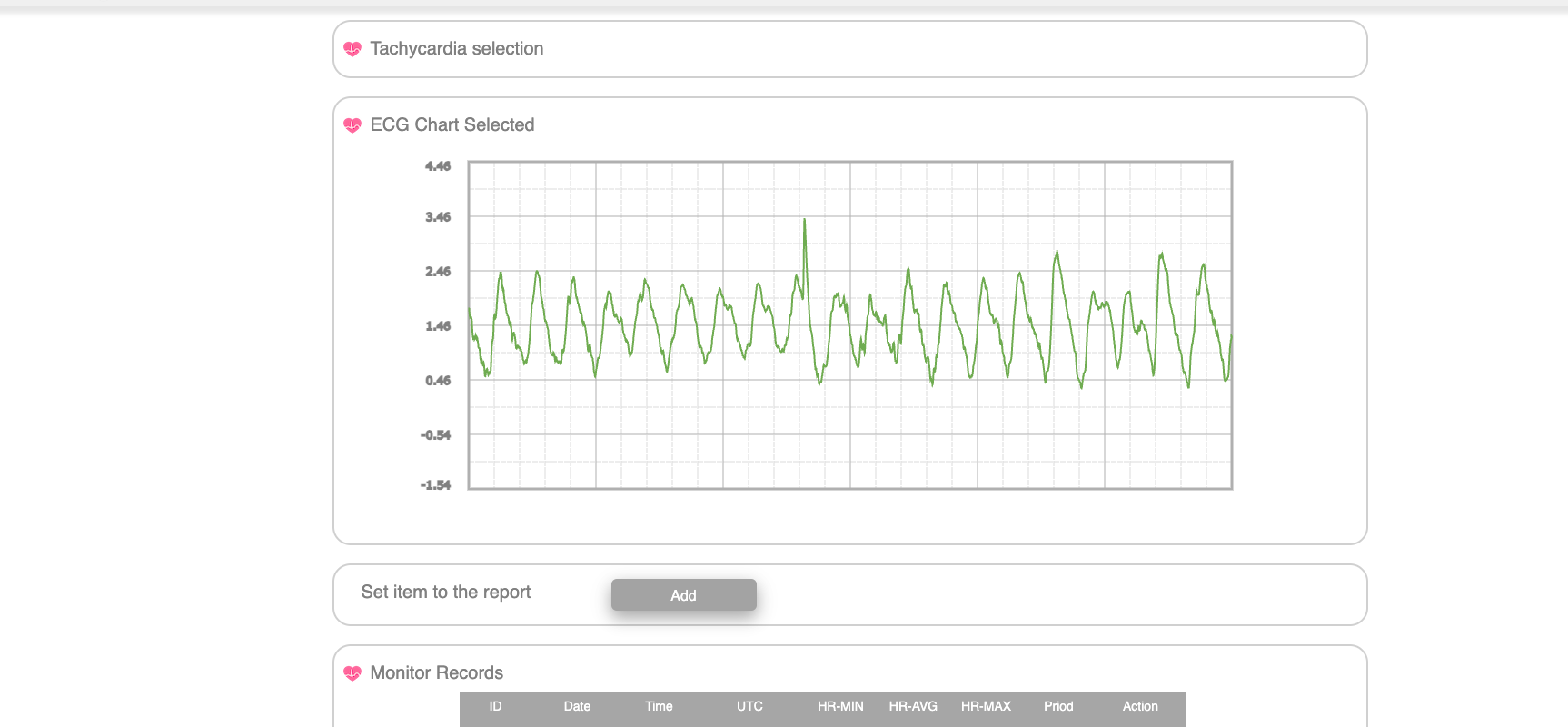
Please click the “view” button to see the final generated report.

Upon entering the report page, you will find the patient’s basic information in the report. The report also includes the normal sinus rate and AF heart rate, an overall heartbeat trend graph, and other detected abnormal ECG patterns.

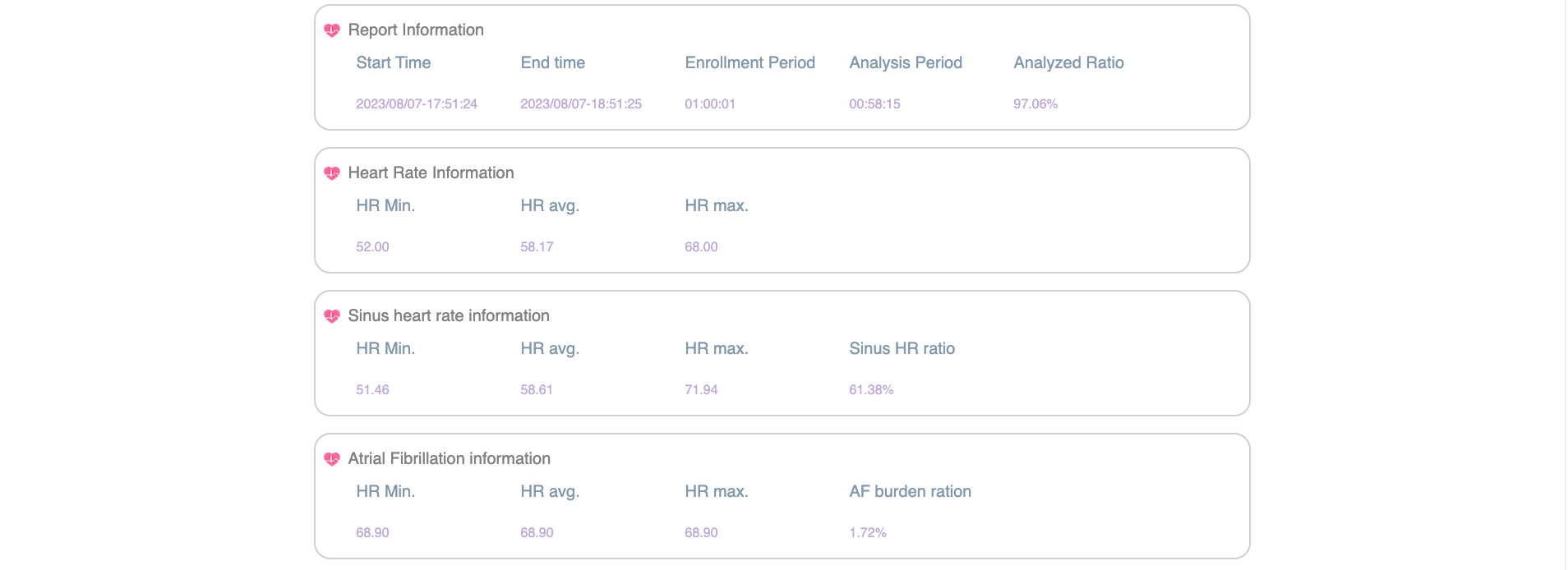




The following video is a seven-day example, and besides utilizing the VS-SAFETY service from VitalSigns Technology, we also welcome our customers to independently use VSH101, VSG101, and VSG102 to create a similar ECG monitoring service system like VS-SAFETY. All the programs and communication protocols are clearly provided on the website, or you can search for VS-ECG to achieve a similar system.
After reviewing the automatically generated reports from VS-SAFETY, many of our clients, mostly AI-related service companies, are interested in obtaining the raw data. VitalSigns Technology provides online downloads of all ECG Monitor measurement data. Besides using the company’s VS-ECG software service, you can also utilize VS-SAFETY in the preliminary stages for specific practical purposes. The raw data from VS-SAFETY includes a data file for each session (info.csv) and single-lead ECG data (ecg.csv).
Firstly, you can go back to the “ECG Monitor” page. Enter “A123456789” as before to access our example patient “John.”
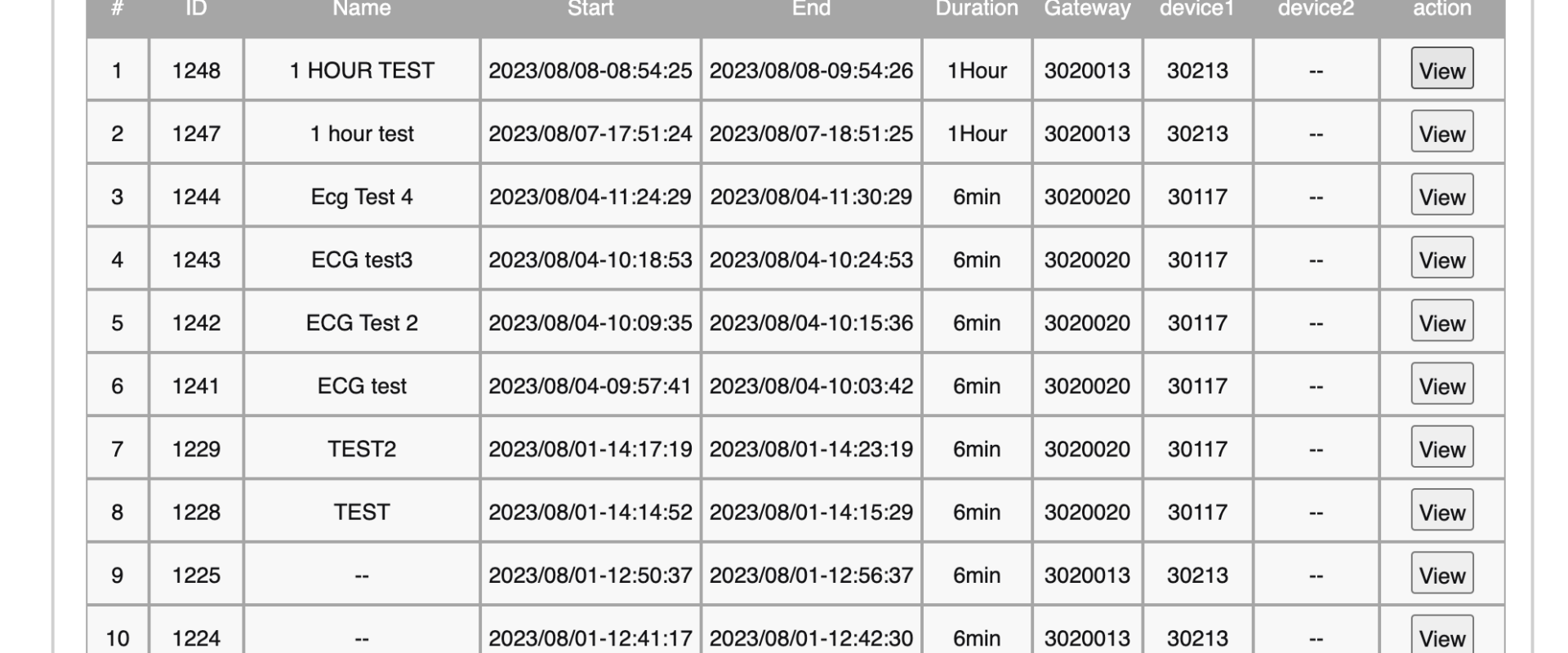
Please navigate to the “Report Data Download” section located at the bottom of the screen and click the button. Select the desired data time range. The data is divided into hourly segments. You can download either the “info.csv” file or the raw data file “ecg.csv”.
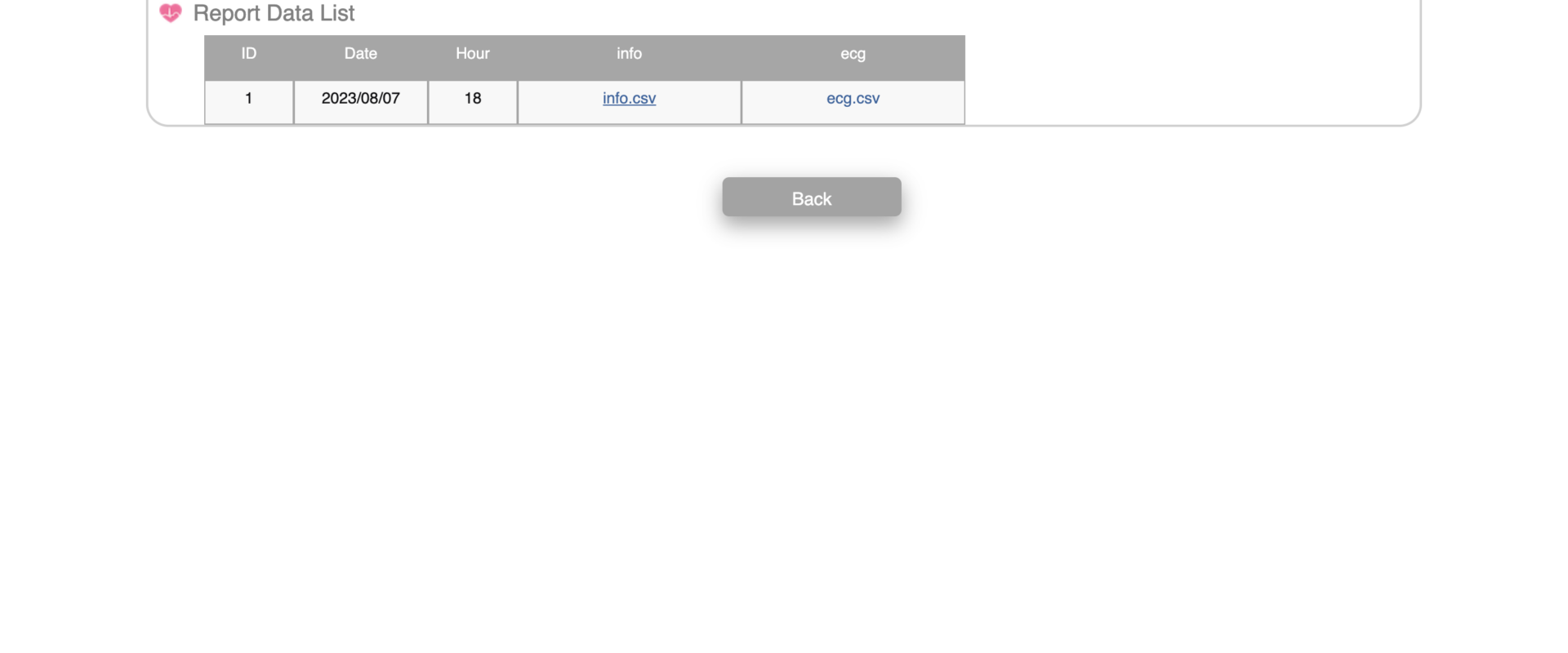
The “info.csv” file contains 27 recorded data points from our single-lead ECG monitor within the specified hour. This includes information such as time, heart rate, g-sensor readings, and HRV values, among others.
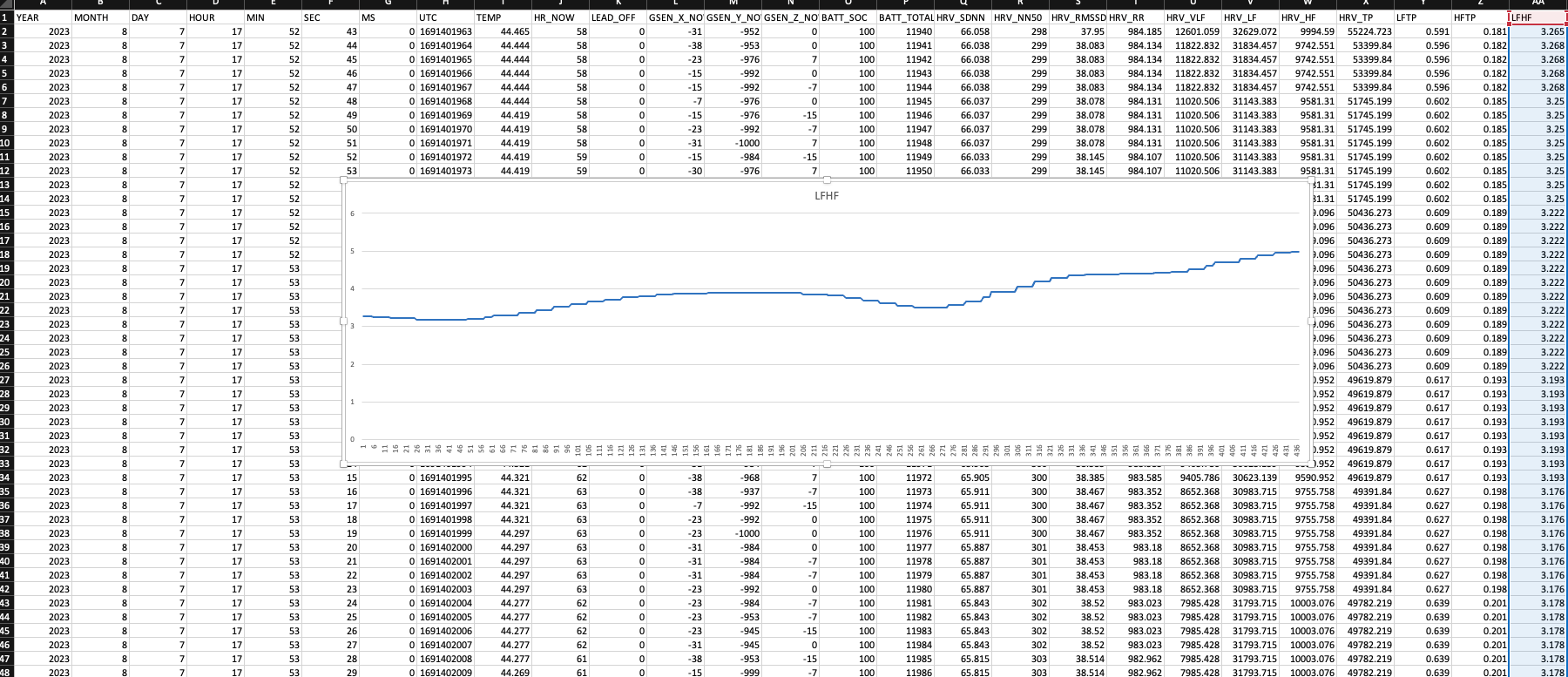
The “ecg.csv” file contains a series of single-precision floating-point numbers, where each value represents a measurement in millivolts (mV). Each floating-point number corresponds to a time interval of 2 milliseconds (ms), with a sampling rate of 500 Hz (0.001 seconds). By concatenating these floating-point numbers together, you can reconstruct the ECG waveform.
You can directly input these signal files into your AI model for training medical conditions.
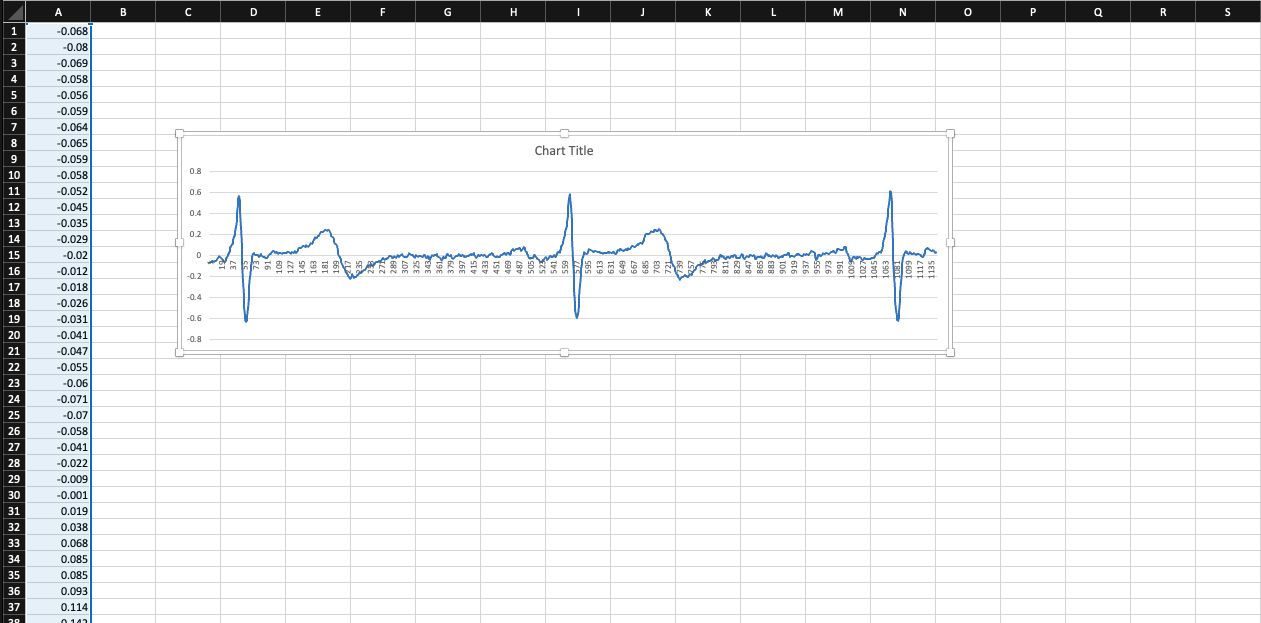
AI disease diagnosis requires a substantial amount of reliable data. You can utilize VitalSigns Technology’s VS-Safety platform or use VSH101, VSG101/VSG102 to collect real-time electrocardiogram data. Simultaneously, apply this data to your AI disease diagnosis model to quickly achieve prevention and prediction of cardiovascular-related illnesses.
The next step is to introduce the “Cardiac Sensor List” page. VS-SAFETY utilizes single-lead ECG, and you can see the currently operational ECG devices in the “Device ECG List” section.
Next, you can read the following chapters in sequence to further understand the features of VS-SAFETY.
